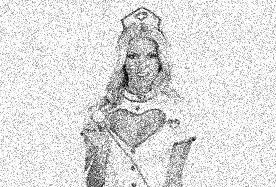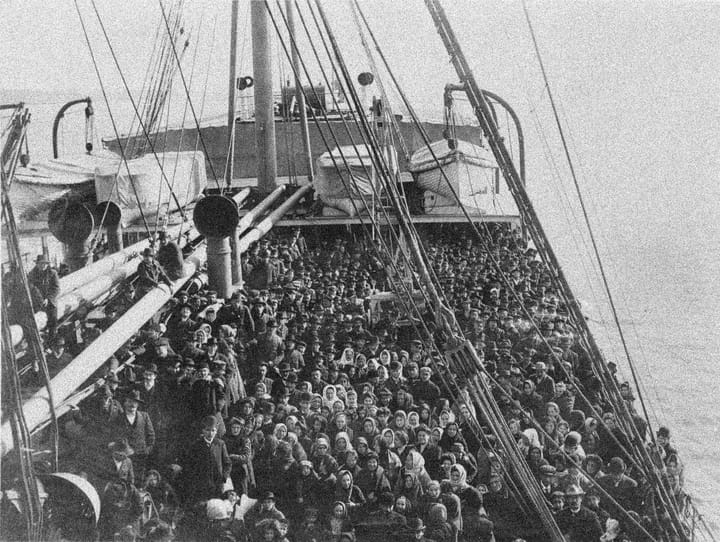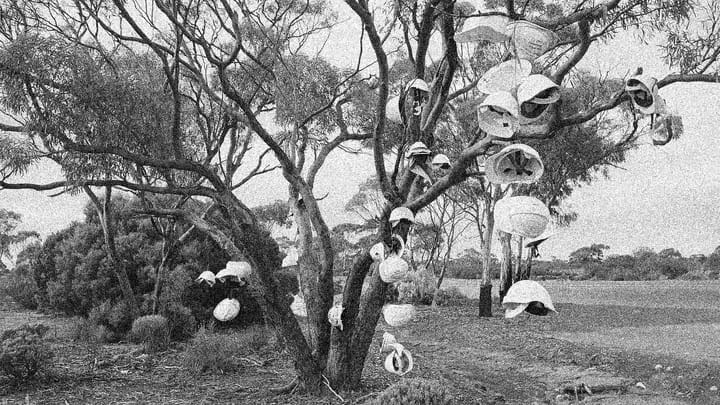The Cultural Turn Assigned To The Labor Beat, or the Curious Case of Gabriel Winant
When your politics are grounded in dynamics of inclusion and exclusion, labor is just one beat among others.

There are today two camps of left-labor writers and organizers. They share the same basic goal: growing the power of labor and its institutions in society, winning social-democratic gains, beating back the power of capitalist interests, and re-building social programs and redistributive policies. But the way these things are to be achieved is starkly different.
One path is dedicated to building the existing core of institutional working-class power. It involves an active social-democratic reformism in the electoral political sphere, and efforts to strengthen and build ties to existing labor unions while also expanding new organizing. It recognizes that despite decades of assault, major labor unions still have levels of membership, treasuries, political power, and organizing capacity that far outstrip any other organizations in our society in terms of their potential for directly challenging capital and capital’s nearly unchecked power in the state. It recognizes major unions as the most plausible foundation to build on for vast expansions of working-class political activity. This view also recognizes that existing labor unions are internally complex. They are institutions with internal political struggles over representation, militancy, organizing, political education, and leadership. Tendencies toward greater militancy and political seriousness can be encouraged and developed, but the internal politics must be reckoned with honestly and not simply dismissed.
The second path demands totally new unions and a “new coalition” that tries to move as much as possible around existing institutions of working-class power. They want “new forms of organizing” that can square the circle of traditional labor and the woke Left through combining the rhetoric of culturalist radicalism with a priority concern for organized labor. As Gabriel Winant, a key figure in this second tendency, writes in a 2017 Dissent essay, “One way or another, workers will reinvent or transcend inherited organizational forms, or they will never make themselves heard at all.” This is the path of what we will call the New Labor Culturalist, the “disruptor” of the labor scene.
One condition of being a “disruptor” to the labor scene is that you must consistently downplay particular strengths of organized labor and the victories it has accumulated in the past. The New Labor Culturalist tends rather to emphasize the alienating aspects of working-class life in the industrial core of the post-war era, or to see existing institutional “baggage” as constraining today’s labor upsurges, rather than recognizing them to be the fruit of institutional seeding by major labor unions.
At root here is a wariness about the core institutions that have somehow managed to weather the neoliberal storm and to have maintained some bit of power—however precarious, disorganized, and in need of renewal and reform. If you’re a New Labor Culturalist, much of this institutional core is just not a good starting point for organizing. The better strategy is instead to jettison this foundation and conjure a new coalition, one that looks, talks, and acts the way you want them to.
The New Labor Culturalist is, unsurprisingly, a product of academia, even if not all of its adherents are academics. People who decades or even a few years ago would have spent their lives decolonializing the Western canon or deconstructing inherited imaginaries are now learning some labor words and saying them online. They are tweeting all day about labor disputes, and they are writing articles in literary magazines about the woes and peculiarities of various segments of the working class.
There is nothing fundamentally wrong with left intellectuals coming from elite backgrounds. That is typically the rule, not the exception. But whereas the historical left intelligentsia generated their theories through direct contact with working-class political organizing and its challenges, left intellectuals today spring directly from elite universities and want to bring the working class to the academy rather than vice versa (no coincidence that the five largest union filings in 2022 were amongst graduate students). This essential rootedness in academia and other professional spheres rather than institutions of the working class colors their basic outlook about the working class and determines where they are willing to place their allegiances and what strategic prescriptions seem most obvious.
Labor, Just Not All Of It
Winant’s The Next Shift, recently the winner of the Deutscher Prize, perfectly encapsulates this trend and the type of the new labor intellectual who is not so subtly trying to sneak culturalism into labor politics. By no means do we intend to undertake a full review of this book’s contents and argumentation. In fact, we have little to add to the basically single critical review of the book by Maureen Tkacik in The American Prospect. Tkacik outlines two main flaws of the book: that it attempts to make political-economic arguments far downstream from the causal forces (deindustrialization) propelling the changes it investigates, and that it repeats the neoliberal political-economic tropes that blame organized labor for the ravages of deindustrialization as “insiders of the [New Deal] regime of collective bargaining”, and thereby “neglects the forces of power that keep all workers down.”
Tkacik also picks up on the New Labor Culturalists’ elemental sense of confusion in the face of “working class life,” which strikes them as an alien form in need of “deep interpretation” and the often bizarre formulations that arise when the author attempts to place this form of life in their hermeneutic frame:
[T]he night shift, and the consequent lack of control over his body’s rhythms … posed a threat to his performance of normative masculinity,” Winant writes of an entry in one steelworker’s disciplinary file. On the practice of passing on the family row house to one’s offspring: “A house formed the enduring physical carapace of the continuity of working-class life.” On making kids do chores: “Just as women’s domestic work was unquantified, dissolved into the realm of love, children’s work appeared only as part of their upbringing, not understood as an economic contribution.” On a Black steelworker’s wife’s musing during the 1959 strike that “the love of her husband and her children” gave her reason to live: “[H]er shelter against racialized economic disturbance, in other words, was domestic normativity.” On another Black steelworker’s wife who is forced to sled down the hill on a cardboard box to get to her nursing home jobs on time after the mill closes, her husband is laid off, and bus service is curtailed: “Such risky routines illustrate the point made by feminist critic Neferti Tadiar about how care labor turns women’s laboring bodies into ‘media’ for the making of other lives.”
Speaking directly about class position and material interests is inadequate and crude. What is needed is the sensitive and critical ear of the ethnographer. If thinkers like E.P. Thompson and Raymond Williams began the cultural turn without fully abandoning materialism, the return comes through thinkers like Foucault, Harraway, and Rancière. Instead of speaking more directly to issues of class position and material interest, one hears about “rhythms of life,” “life-worlds,” “biopolitics,” “necropolitics.”
The primary problem with the book, however, is not its tendency to dwell on various “normativities” and “carapaces” of working-class life, but rather pertains to the kind of strategic thinking that follows from an assumed superfluity of major swathes of the working class.
The New Labor Culturalist wants to celebrate and support labor—just not all of it. In fact, many workers still need to be punished for their hand in creating the racist and sexist society we now inhabit. The basic elite contempt for the working class is thereby smuggled back in under the guise of a more progressive, moral, and empathetic “new working class.” Punishing, or at least writing off, some workers for having once been able to live a decent life is now part of organizing strategy. White manufacturing workers with their racist culture and macho attitudes are portrayed as a privileged set whose benefits were bought at the expense of women, people of color, and others excluded from the post-war boom, which led certain segments of capital to prefer accepting concessions instead of fighting to the death.
Thus, instead of lamenting the loss of the old order and wanting to rebuild something that it had achieved, even while discarding forms of exclusion and hierarchy endemic to it, the New Labor Culturalist points instead to the new world as potentially more radical, liberatory and revolutionary than the one that featured an organized industrial working class making high value products. Winant confuses an unmaking for a remaking, seemingly not finding anything lost in the transition to a service economy, and either ignorant of or resistant to the fact that industrial workers not only work in industries where more profit can translate to higher wages but also enjoy far greater leverage to transform profit into wages. “In the long view,” he writes in The New York Times, “[blue-collar work] seems not to be a category of labor for which our economy generates consistent demand.”
The Politics of Exclusion vs. Class Politics
The political vision at work in Winant’s writing, mostly hiding behind the scenes in The Next Shift, comes out much more explicitly in topical and political essays in Dissent, n+1, The New York Times, Jacobin, and other outlets. These writings outline a political theory informing The Next Shift wherein dynamics of inclusion/exclusion often take precedence over those of class formation and class struggle.
Two things follow from this. On the one hand, a whole host of non-economic factors play an equal role in what it means to have “power” in society. This extends from wages to issues of representation, “voice,” symbolism, etc. This makes a mess of the simple but important premise that material interests and power condition these other spheres of life—the essential materialist wager. More importantly, however, dynamics of inclusion and exclusion are applicable up and down the class ladder. One can dedicate one’s political activities to making sure there are more black or female CEOs, politicians, lawyers, doctors, Ivy League students, army generals, or anything else.
In the introduction to The Next Shift, Winant frames his work not in terms of class power and class struggle, but in terms of norms of justice where social importance, recognition, and economic reward are out of joint. The problem is not that the working class as a whole has lost political power, but that one class of workers (care workers) has expanded while suffering “economic exclusion.” The theory of politics that puts the inclusion/exclusion binary front and center is articulated clearly in Achille Mbembe, an influence on Winant.
This contrasts with traditional class politics on at least two points. First, the definition of these “parties” is based on collective recognitions and cultural identities, not class positions with respect to capitalist production and accumulation. Winant clearly states his belief in the cultural constitution of groups in an n+1 essay:
Political speech does not find individuals as points on an economic grid, directing them toward the party or politician whose platform matches their abstract preferences. It finds them, instead, embedded in particular lifeworlds. And if class processes form the basis of political action, they still must become manifest through the organization of social life, which in turn becomes meaningful as culture. This goes some way toward explaining how so many people could vote for Trump and his party, even as large majorities endorse progressive policy goals in surveys and ballot initiatives. (Our italics)
Second, it conflicts with traditional class politics because the binary of inclusion/exclusion can be found in any sphere or any level of society. In the case of Winant’s theoretical inspirations like Achille Mbembe and Lauren Berlant, inclusion/exclusion is mapped on the existential level: those included in the “living”, the recognized political subjects of society and state, vs. those who are “permitted to die.” In Winant’s work, it takes the decidedly less dramatic form of the distinction between the insiders and outsiders of the “postwar collective bargaining regime.” In either case, the critique it produces is a moral one that fixates on the imbalance between, in his words, the “social importance” of care workers in contrast to their “economic exclusion”—an imbalance that the steelworkers of Western Pennsylvania were not implicated in and somehow should bear a responsibility or moral guilt for.
Marxists talk about workers and labor because workers have the leverage in society to create costs that are substantial enough on their employers that they are forced to make concessions, and because the working class shares a common economic interest and makes up a democratic majority. This allows them to make real gains through collective action that other groups simply cannot manage. The center of this politics is the conflict of classes within production. In contrast, the politics of inclusion/exclusion are infinitely reproducible at every level and in every aspect of society. What is at stake is not power itself but a field of shifting recognitions and representations. In this view, power is everywhere and nowhere. Labor is just another “field” riven by this dynamic, organized in “regimes” of inside and outside like any other. The steelworker, the mill owner, the state regulator are all “insiders” in the “postwar regime of collective bargaining”, and their distinction from the “outsiders” matters significantly more than internal divisions within the “regime.”
This is the central curiosity of Winant’s work. A politics of cultural formation grounded in a deep dynamic of inclusion/exclusion has no intrinsic connection to the concerns of labor. Winant sees some people who are privileged and some who are not. He doesn’t prioritize economic structures that create conditions within which classes fight for power and resources. He envisions rather a sort of map where different segments fight to be recognized, represented, included, their “voices heard,” while others are cast aside to suffer under the weight of white working-class normativity.
The appeal here for so many in academia, the “media” and the literary scene is obvious: the either dull or non-progressive reality of the labor movement can be squared with educated social sensibilities.
The Appeal of Fantasy Coalitions
Winant’s earlier writings betray much more extreme political judgments than are conveyed in The Next Shift (see, for example, this essay from 2017). He is now wised up enough to know that unalloyed contempt for workers is not a great strategy for someone who wants to have a career as a major labor intellectual.
But issues still emerge in Winant’s political essays around the new working-class coalition he envisions:
The decisive role of cities like Philly, Detroit, and Minneapolis in the defeat of the right points toward the possibility of leadership for the emerging socialist and abolitionist politics based in the young activist centers of those cities, and embodied on the electoral stage by Ilhan Omar, Rashida Tlaib, Cori Bush, Alexandria Ocasio-Cortez, Jamaal Bowman, and of course Nikil Saval. A socialist program that confronts white supremacy as its immediate object—rather than trying to find a majority by navigating around the edifice of white supremacy—is the principle of unity for this bloc. Its social basis lies in an alliance of low-wage workers and high-debt workers, disproportionately young, who are concentrated together in cities and increasingly in suburbs. It is not that such an alliance on its own constitutes a majority; it is that it forms a potentially solid social foundation from which to provide rational answers to the structural problems of American society, and thus to recruit the more disparate elements needed to resolve the crisis. Join together these parts, and you have a big enough resonator.
What in The Next Shift is more of a sense of derision for steelworkers as the “insiders of the collective bargaining regime” becomes an explicit rejection of institutionalized labor in Winant’s vision for a left political coalition in the 2020’s. The core of organized labor that survived the ravages of deindustrialization and neoliberalism in the U.S. is nothing more than an obstacle to his fantasy coalition of downwardly-mobile professionals and poor people of color.
Such a perspective only makes sense in the context of the primacy of the “inclusion/exclusion” dynamic. The belief that you can build a successful working-class political coalition by excluding much of the core of organized labor is not tenable, except in a few ultra-blue urban districts. It is simply not a strategy for growth. A coalition built on the fundamental commitment of “confronting white supremacy” as opposed to, say, providing economic security and decent jobs for all, is not going to build a political movement.
It also shows a fundamental contempt for organizers, labor activists, and labor leaders who have worked tirelessly to maintain the core of organized labor in the U.S. instead of indulging in the fantasies of “alternate unionism” and “non-traditional organizing.”
Where Two Strategies Diverge
Unsurprisingly, the attempt to square the circle of Brahmin cultural sensibility and class politics leads away from a politics that centers working-class interests. A few examples will suffice.
First, consider the 2021 India Walton campaign for Mayor in Buffalo, NY. In an article in Jacobin published in the lead-up to the general election, Winant gushed that this was the new type of politician and the new type of coalition, focused on “confronting white supremacy” and composed of downwardly-mobile professionals together with underpaid healthcare workers. Crucially absent from his analysis was any mention of Walton’s failure to win support from the major labor unions. When Byron Brown mounted a write-in challenge, Walton went down in defeat.
Winant’s ideal political leaders are essentially an expanded version of the Squad: “The possibility of socialist realignment begins in the cities. There we find concentrations of downwardly mobile or indebted professionals, who have made up the most significant ideological cadre for socialist politics but have struggled to establish a sufficiently broad base.” This is turning necessity (the only place where socialists have any political purchase is in deep blue cities) into a virtue (the only place where socialists should be seeking political purchase is in the deep blue cities). This “grow the Squad” strategy of the New Labor Culturalists is in marked contrast to a growth strategy for swing districts.
With respect to labor, Winant champions a similarly limiting perspective: of the victory of the independent Amazon Labor Union and the spread of Starbucks Workers United, he writes:
[…] where labor has lost, the burdens of existing organizational legacies have weighed heavily. For example, the repeated failures of major organizing efforts in the South (including the prominent Amazon campaign in Bessemer, Alabama) have much to do with the political and organizational baggage of existing unions, which limit the space for workers to see their own participation as a meaningful form of voice and agency.
Beyond being a form of victim blaming, this perspective frames existing unions as “baggage,” which will not do much in the fight to progress from a successful NLRB election to a decent contract. It also ignores the behind the scenes work that existing unions have done to seed many of these new efforts: the SEIU has, for instance, played an important role in the Starbucks Workers United campaign, and the Teamsters have played an ongoing role in Amazon organizing in Southern California.
For Winant, labor politics is black and white: either you stand with the dying, immobile bureaucrats or you call for new forms of organizing that bypass the old institutions. But what about the current unions with millions of members, giant treasuries, and significant political clout (however diminished over the past few decades)? The organizing efforts of graduate students and coffee shop workers are fine, but what about the strategically-important industries and reform within existing institutions?
Institutional Dynamics
In a 2016 Dissent essay, Richard Yeselson coined the term “laborism,” or the growth in pro-union ideology “even as labor’s own political, cultural, and economic power continues to wane.” He identifies the institutional cause of this new phenomenon as the relationships established in the 1960s and continuing into the present between labor institutions and elite institutions like Yale, who “saw that unions, as an analytical proposition, if not a current reality, were institutions with the national heft, history, and indigenous roots in communities to help ordinary citizens regain some economic and political power.”
To Yeselson, and to us, this is by no means a negative phenomenon. It makes, says Yeselson, a certain amount of “structural sense, but it’s certainly not immediately intuitive or straightforward.”
A “New Laborism” atop a weakened trade union movement is our current reality. The goal should be to use the resources inherent in this situation to overcome it. The New Labor Culturalists represent one of the possible pathologies that this structural and institutional situation can produce, a path that luxuriates in the comfortable contradictions of a situation where you can make a decent living encouraging a certain form of working-class “militancy.”
It is necessary today, in both electoral and labor politics, to privilege possible progress over the ideal image of what we want our officials to be. The years since the first Bernie presidential run have seen much of the U.S. Left agree to be serious reformers in electoral politics. We should also be serious reformers in labor too, rejecting the New Labor Culturalist tendency to dismiss the existing power base and propose a new one that fits our ideological preferences. In labor as in elections, we have to start with the existing array of forces as the foundation of a coalition capable of building power today.
■
Stuart Thompson has never been to Brooklyn, is not a transplant, and has a specific job but no specific job title.



